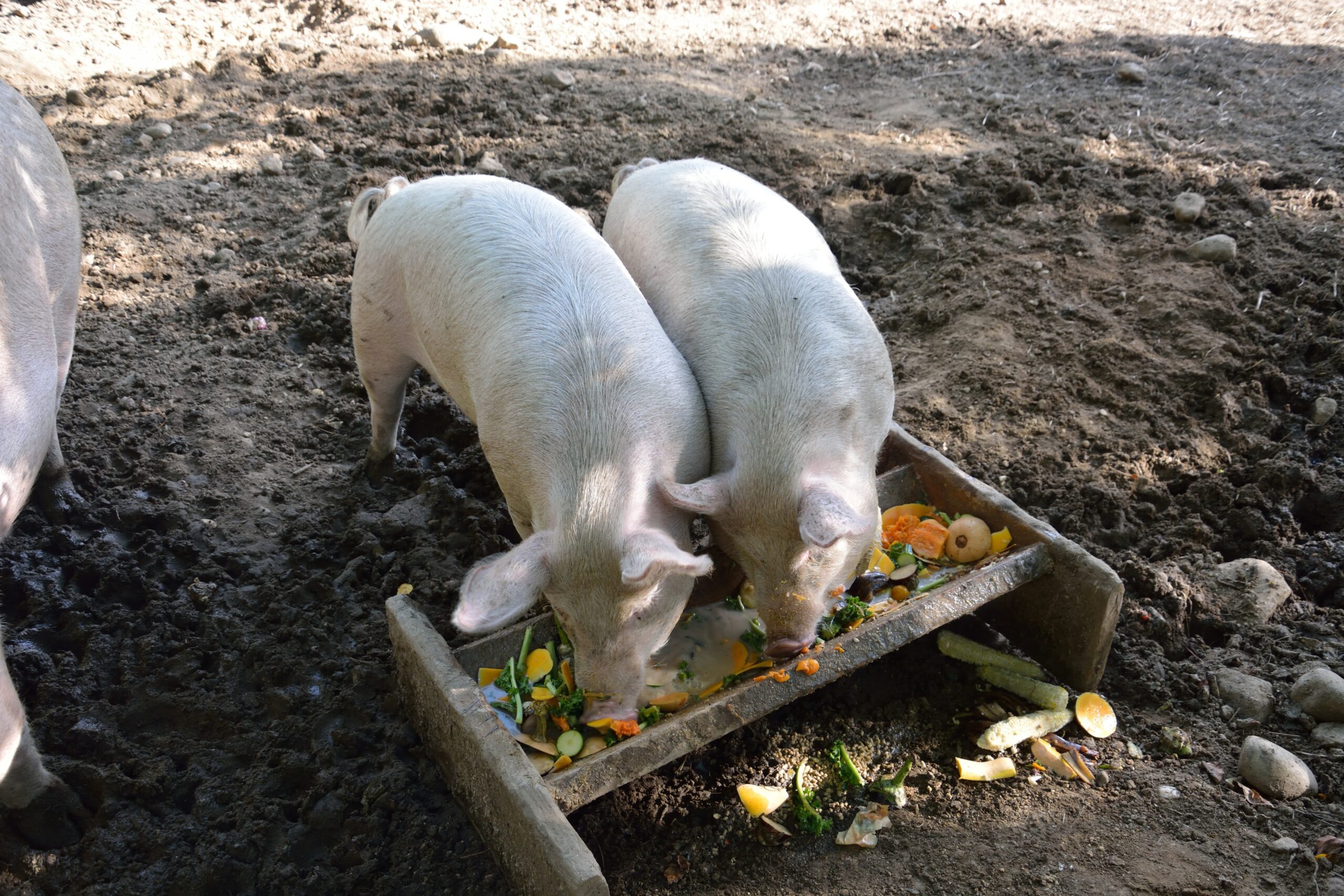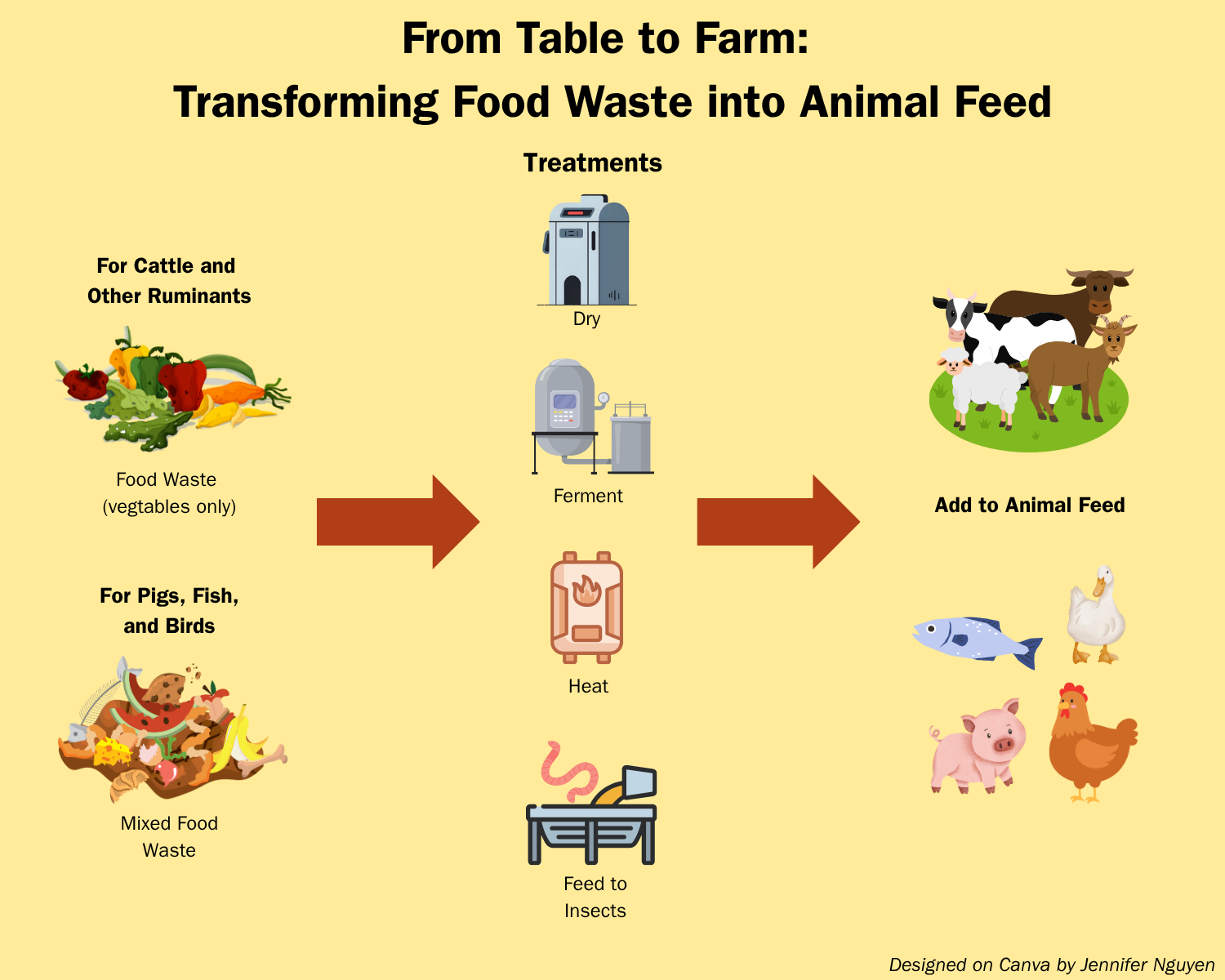-
Tapping an Innovative Climate Solution: Upscaling Food Waste to Animal Feed in Japan and China
July 31, 2025 By Karen ManclThe numbers are staggering. A third of the food produced in the world is lost or wasted—from farms and food processing factories to grocery stores, restaurants, and homes. This growing mountain of rotting food is a major methane emitter, accounting for 8 to 10 percent of global greenhouse gas emissions. If food waste were a country, it would be the third largest greenhouse gas emitter, with the United States and China as leading food wasters.
In many countries, government programs promote collecting and distributing surplus food to the needy. In the United States only about 2 percent is collected for redistribution to people, while 14.7 million tons of food suitable for animal feed is dumped into landfills each year. An unfortunate missed opportunity to lessen the strain on landfills and reduce methane emissions.
In 2009, Japan took the lead in policies to promote the safe feeding of food waste to animals. China has embraced similar innovations with the goal of reducing grain imports and the pollution and methane caused by wasted food. By contrast, US policies still discourage feeding waste food to animals for fear of spreading disease. However, with proper treatment, food waste can be converted to safe, nutritious animal feed, creating wins for food security, landfill capacity, and the climate. The United States could look to Japan and China as models on how to fuel innovations for upscaling food waste.

Japan’s Ecofeed Takes a Bite out of Food Waste
Japan, a major food waster, is extremely dependent on food imports with one of the lowest food self-sufficiency rates (37%) among developed countries. It imports two-thirds of its food and three-quarters of its animal feed. In 2005, Japan set goals to divert food waste to reduce their reliance on imported feed by 2030. Since then, they successfully upscaled 80% of manufacturing and 57% of wholesale (e.g., restaurant, hotel) food waste to animal feed.
Efforts to increase self-sufficiency in animal feed began with the 2005 Basic Plan on Food, Agriculture and Rural Areas which set up the Recycled Feed Promotion Task Force. The task force trademarked the recycled food waste as Eco-feed, and in 2007, 171 Japanese producers generated 150,000 tons of animal feed. The Japan Scientific Feed Association launched a certification system in 2009 to promote high quality and the government began supporting R&D in production methods. In 2020, Japanese producers fermented or dried food waste to generate 300,000 tons of eco-feed, which supplied 12% of the domestic animal feed consumed in Japan.
Rethinking Animal Feed Policies in China
China has a long history of collecting and recycling food waste as animal feed. When the National Academy of Sciences organized a group of US animal scientists who first traveled to China in 1979, they observed that animals were fed any food farmers had, including farm and food waste. China had no planned animal feeding or nutrition programs, opening the door to what became US agriculture’s largest export market, selling soybeans, corn, and other grains to China as animal feed.
Chinese farmers still kept supplementing animal diets with food waste, but that changed in 2018 after African Swine Fever devastated China’s pork supply, killing 250 million pigs. After the virus was detected in food waste containing contaminated pork, China’s Ministry of Agriculture banned the feeding of food waste as animal feed. This ban made China even more dependent on imported soybeans and other grain as animal feed, mostly from the United States and Brazil.
Even before today’s trade war with the United States, Chinese policymakers adopted a plan to reduce soybean meal in animal rations. Besides passing the 2024 National Anti-food Waste Law to prevent grain wastage, policymakers took a fresh look at food waste as animal feed. In 2025, China is launching 20 pilot programs in cities across the country.
Many Obstacles to US Food Waste Diversion
About 550 pounds of food waste per person is thrown away in the United States each year, about half of what we eat. Right now, only 10% of that wasted food is converted to animal feed. Because animal feed (mostly corn and soybeans) is plentiful in the United States, farmers have few incentives to join the effort to collect, treat, and handle animal feed derived from food waste.
Legal hurdles are also a disincentive. To protect animal health, four federal laws regulate converting food waste to animal feed – Food Safety Modernization Act, Swine Health Protection Act, Ruminant Feed Ban Rule, and Food and Drug Administration (FDA) regulations regarding adulteration and labeling. In addition, 23 states forbid the feeding of food waste to animals.
Finding Win-win-win Solutions for Upscaling US Food Waste
Dr. Gerald Shurson, University of Minnesota animal scientist, sees great potential in upscaling food waste to animal feed. In a recent interview, he told me about his team’s research to reduce pollution from food waste while also protecting animals from food borne disease. In a total lifecycle analysis, his team found that thermally treated supermarket food waste generated 60 percent lower greenhouse gas emissions than growing soybeans as animal feed. Thermally processed food waste feed also has a lower water and land footprint than growing grain for pigs.
Another promising, if unconventional, strategy is feeding food waste to insects and using the processed insect meal in animal feed. Insects are a natural protein source, making this an effective strategy for feeding animals. I visited the lab of Dr. Yanting Guo, the endowed chair of sustainability studies at Hood College. She is growing black soldier fly larvae by feeding them food service scraps. Food service and household food wastes are the most difficult to recycle because they contain a mixture of foods contaminated with paper and plastic. I watched the larvae eat up all the food scraped from plates and when all that remained was inedible paper and plastic, they crawled out of the pile for easy collection for chicken feed.
The US FDA, which regulates food additives, has deemed the dried black soldier fly larvae as an appropriate feed ingredient for poultry and pet food. Notably, some smaller Chinese cities are piloting similar food waste recovery practices and turning cockroaches into pig feed.
Even US policymakers who don’t swallow the need for climate action, should examine the economic benefits from upscaling food waste into animal feed, such as cost savings in waste management and new business opportunities. China and Japan offer a roadmap on cost saving models for converting food waste into safe and nutritious animal feed.
Karen Mancl was a Wilson Center Scholar 2023-2024 and a former Global Fellow (2024). She studied US-China agricultural collaboration and Professor Emerita of Food, Agricultural and Biological Engineering at The Ohio State University, She holds a PhD in Water Resources from Iowa State University, an MA in East Asian Studies and an MA in Public Policy from Ohio State University.
Header Photo: Two Pigs Eating at the Trough, photo courtesy of Adobe Stock/Jill
Figure: Designed by Jennifer Nguyen
Sources: Ag Funder News, BBC, China-US Focus, Cornext, Environmental Science and Pollution Research, Farmdoc Daily, FDA, Feedstuffs, Foods, Food Science and Technology, Hokkaido Bureau, Hood College, Michigan State University, National Sustainable Agriculture Coalition, Nutrients, One 5 C, Recycling, Resources, Conservation and Recycling, Reuters, University of Minnesota, USDA, Veterinaria Italiana, World Wildlife Fund
 A Publication of the Stimson Center.
A Publication of the Stimson Center.








